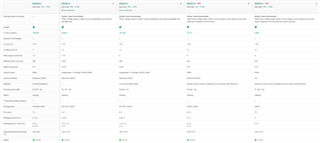Other Parts Discussed in Thread: DRV8214
Hi
We designed an electronic for driving an electromechanical actuator with a DC-Motor, driven by a DRV8832. On about 5% of our electronics, we measured a surprisingly high deviation of the PWM-Frequency.
Nominal Frequency written on datasheet is 44.5 kHz, but the measured Frequency of three of our deviating samples are:
- 38.2 kHz (Sample 02)
- 49.6 kHz (Sample 05)
- 49.4 kHz (Sample 06)
If needed, I can post the measurements-pictures of the above samples.
Measurement Details and Explanations:
- The duration of an Opening- and Closing-Sequence are 60 ms.
- We measured the frequency at 10ms, 30ms and 50ms after start of a Sequence.
- Labor Temperature is 22 °C.
- No heating of electronic parts, because of less than 1 Sequence per Minute.
- V_MOT is supplied over a stable Power supply with 4.50V
Results / Facts:
- The measured Frequency is stable during the whole Sequence and is independent of Opening- or Closing-Sequence (independent of drive-direction)
- Retries of measurement shows the same results (replicable)
- The measured Frequency is not dependent on the load on OUT1 and OUT2.
- The difference of PWM Frequency is caused by the DRV8832 itself (changing the DRV8832 to another electronic, shows the same results as on the electronic before).
Questions:
- Are those big differences normal?
- How can you explain a such great range of the parts characteristics?
- What is the tolerance of frequency at 25°C?
Thanks for your help and explanations.
Joel


